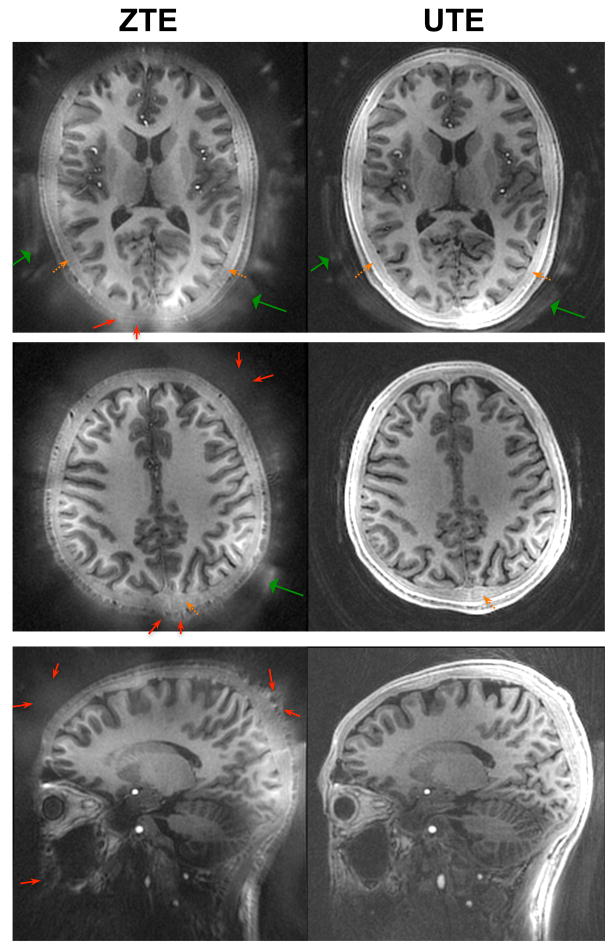Figure 3.
In vivo brain imaging results in a healthy volunteer at 1.1 mm isotropic resolution with fat-suppression pulses and IR preparation. UTE and ZTE demonstrated similar gray/white matter contrast. Both detected signal from the cortical bone in the skull (dashed orange arrows). Signal was also seen from the RF coil and foam padding (wide green arrows), with typically more signal in the ZTE images. In this study, ZTE suffered from some shading and signal dropout artifacts near the edges of the FOV (thin red arrows), although this can be alleviated through improved sequence and reconstruction methods as discussed in the text.

